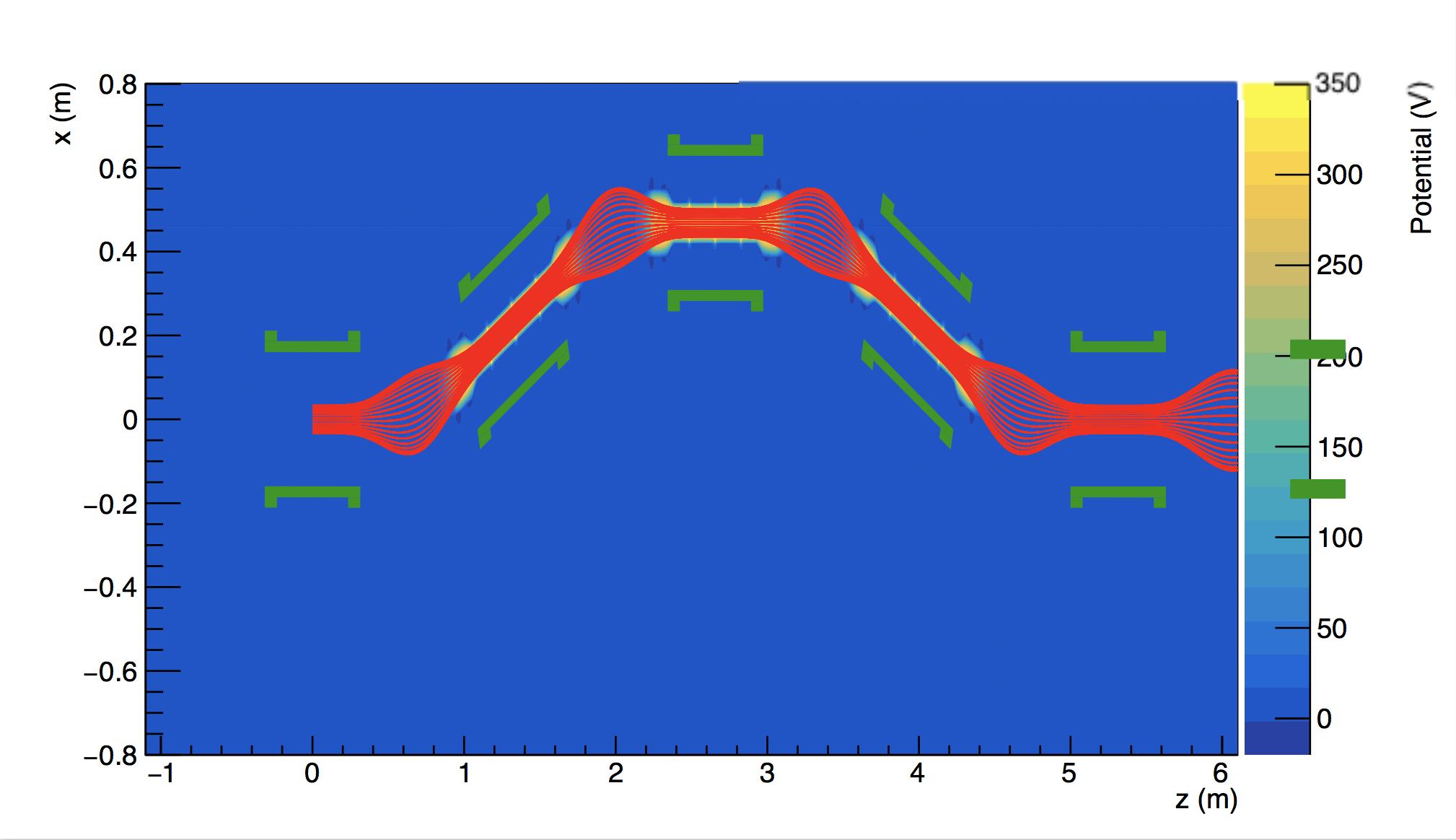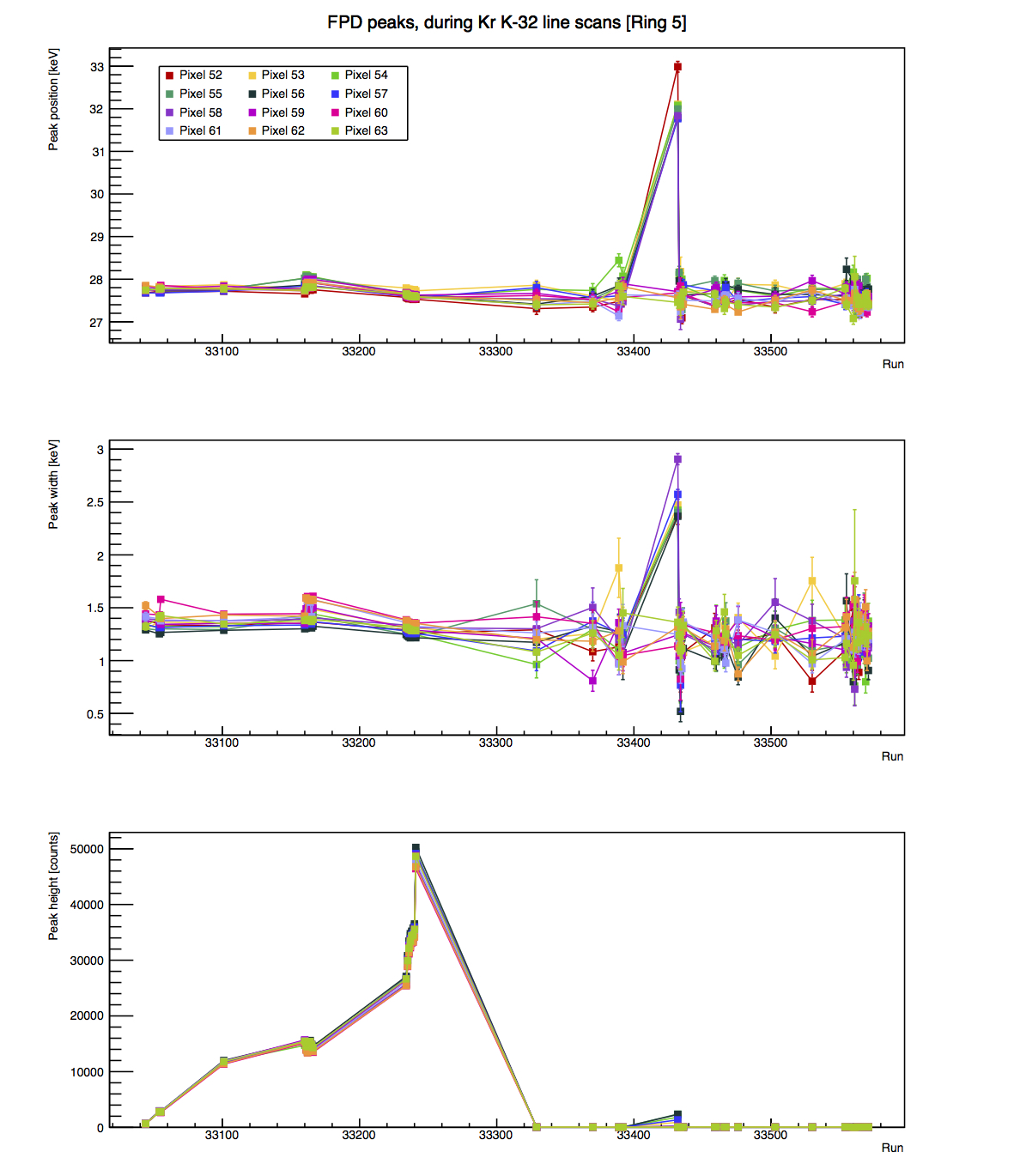I'm currently working on:
Perhaps you've heard of the neutrino, a particle said to be very small and travelling at the speed of light. It's a particle many scientists across many subfields world-wide are keen on understanding better. The Karlsruhe Tritium Neutrino experiment, or KATRIN, aims to do just that. This is a next-generation detector, which looks at the tail-end of the tritium's beta spectrum to tell us about what the neutrino's absolute mass is.
As the final step before the big measurement, we must characterize the detector, with all its subsystems, as a whole. I'm involved in this process in the following ways:

Simulation of the differential pumping section, which reduces the concentration of undesired decay products, in the form of a field map (electric potential in the background, red magnetic field lines which will guide electrons through this section)

Characterization of the stability in energy deposited on the detector, over time, during the Krypton run.
Shown left is the stability for all pixels in ring 5 of the silicon detector, in terms of the fitted peak's mean (top), width (middle), and height (bottom). Most fluctuations are within a 0.1% level, so tolerable. The roughness in the second half of the runs is due to the fact that the electrons are guided in a very tight beam towards the center, so statistics are low out at the fifth ring.
This webpage:
All HTML/CSS done from scratch. Work (and images contained) is completely original, unless otherwise noted.